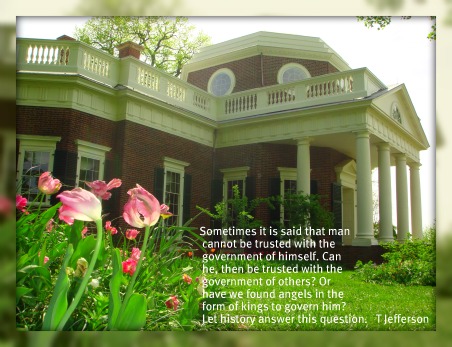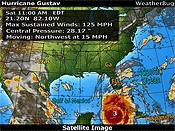The Education Code, Part 1
 Friday, June 28, 2013 at 08:28PM
Friday, June 28, 2013 at 08:28PM Common Core, two words that rattle many parents’ nerves from sea to shining sea; however, there are two other words that should shake us to our very core: Education Code.
The education code is the phantom wrapper around the Common Core that circumvents specificities of curriculum. It is the framework of education policy, conduct, laws, and regulations for all institutions of public education K-16. Every state has its own education code or as it’s known “E.C.” Written in vague legalese, the education code is about to play a far bigger role in defining acceptable words and behaviors, posing an insidious threat to every child and family in ways we have never imagined.
Last February, the education code was put center stage in a California suburb. An event entitled “Threat Assessment: Prevention of Targeted Violence in Schools” was presented by local law enforcement and sponsored by the Ventura County Department of Education. Invited public school administrators were informed that the state’s education code was the blueprint for a new, federal education code rolling out with Common Core.
Most recently, a May 29, 2013 press release #13-61 “Assembly Approves Overhaul of Public School Testing,” issued by the State Superintendent of Public Instruction Communications Division proudly announced that “California serves as one of the governing states in the (Smarter Balanced) consortium.” Given this important tidbit, maybe we all better become a lot more acquainted with the California Ed. Code. Quickly.
This event, like so many held in schools across the country earlier in the school year, was in response to the tragic December 2012 Newtown elementary school shootings. The Ventura Office of Education Director of Health & Prevention and their Teacher Support & Expanded Learning Services overviewed the finer points of “the crisis response procedures required by California E.C. section 35294.2” under the Safe School Plan to bullying, expulsion, and threats, nicely buried elsewhere in codes 32228-322289, 48200-48927, 49350-49355, 48900-48927, 48950, and 48980-48985.
To understand the endless pages of double-speak, you better know someone who can tell you where are the important parts, or sit with an education attorney. Otherwise, you’d never know that section 35294.2 is the tip of the iceberg. But lucky for us, the sheriff commander and captain transformed this unintelligible jargon into a series of concrete checklists, questionnaires, assessments, and concrete action plans for administrators. They also named specific behaviors and words that would be deemed “problematic” for students. Legalese no more.
Nope, the hardcopy “Safe School Threat Assessment” clearly states who and what is a problem child or worse, a high risk threat. There’s no more “in context,” “out of context,” “subject to interpretation” or “based on intent.” What this means is that we may well be living with the kind of documentation, if in the wrong hands, should make everyone of us shudder.
______________________________________
Merrill Hope writes for City on a Hill and Save America Foundation. This "Education Code" series will appear in the August 2013 issue of As A Mom Magazine. Over the years she has inked articles for the Hollywood Reporter and Backstage West. She's married, the mother of a teenager (God help her!) & a dachshund lover. You can follow her at Merrill Hope @outoftheboxmom.
 Merrill Hope
Merrill Hope
The Education Code, Part 2
Common Core, two words that rattle many parents’ nerves from sea to shining sea; however, there are two other words that should shake us to our very core: Education Code.
In this installment we see how the education code is about to play a far bigger role in defining acceptable words and behaviors, posing an insidious threat to every child and family in ways we have never imagined.
Most education codes in each school district across the country reads similarly to this amended Section 32228 of the California education code regarding school safety: “teach pupils techniques for resolving conflicts without violence” (section 1[1]. Innocuous and can mean anything. Well, not no more. Presenting sheriffs at the California “Threat Assessment: Prevention of Targeted Violence in Schools” defined problematic types of kid name-calling, mainly words that indicate intent or veiled threats even if only idiomatic. Ever hear a kid say “You better watch it” or “I’m gonna get you.” Or worse, “my mom’s gonna kill me for flunking the test?” Certainly, we can appreciate the sensitivity to certain words but have we forgotten that “sticks and stones may break my bones but names will never harm me?”
Unfortunately, these days, the sticks and stones are suspect and the names must be reported because in the Threat Assessment Plan, all words/actions are perceived as threats because if not, it would be deemed “tacit permission” from school administrators to the students to continue unacceptable words and/or behaviors (p. 4). The Threat Assessment plan also clearly identifies these behaviors from the education code – teasing, humiliation, jealousy, bullying, victim of bully or ridicule, low or inflated self-esteem; real or perceived loss, real or perceived demeaning and oppressive treatment; real or perceived loss of personal relationship. Now, they are all potential “warning signs” of impending violence. Likewise, exposure to violent gaming and media is on the list as a factor but add “risk taking,” a traditional characteristic for success, now defined as “impulsivity,” it becomes a red flag. Other problematic behaviors in the report are: “being seen as a geek or nerd by others, low commitment to school, divorce, frequent moves, or early academic failure.” A student disciplined by an authority figure also constitutes a threat. So what about the student who voices a contrary opinion? Or sticks up for him/her self in a dispute? Will that now all fall under the category of “defiance,” which is a “perceived,” and not necessarily a real threat.
It’s the implications of these potential risk factors that take us on a dangerous path labeling who is deemed good, who is bad, who is mentally disturbed , and who is a problem child via the chosen “interpreters” of this doctrine. And that can only be a principal, mental health professional or school counselor. Not even the kid’s teacher(s). So what happens when one or more of these folks are not honest brokers?
---------------------------------------------
Merrill Hope writes for City on a Hill and Save America Foundation. This "Education Code" series will appear in the August 2013 issue of As A Mom Magazine. Over the years she has inked articles for the Hollywood Reporter and Backstage West. She's married, the mother of a teenager (God help her!) & a dachshund lover. You can follow her at Merrill Hope @outoftheboxmom.











Reader Comments